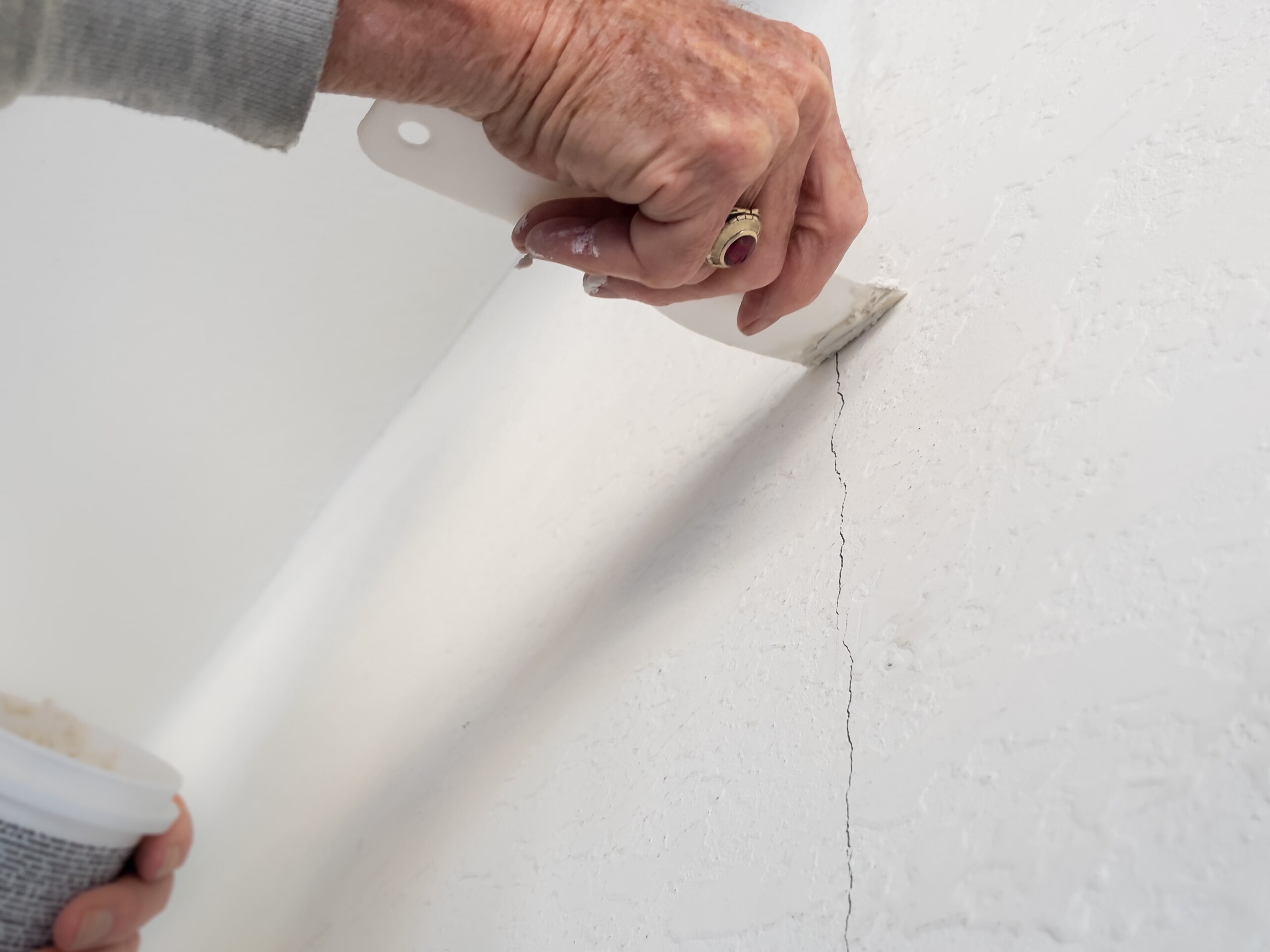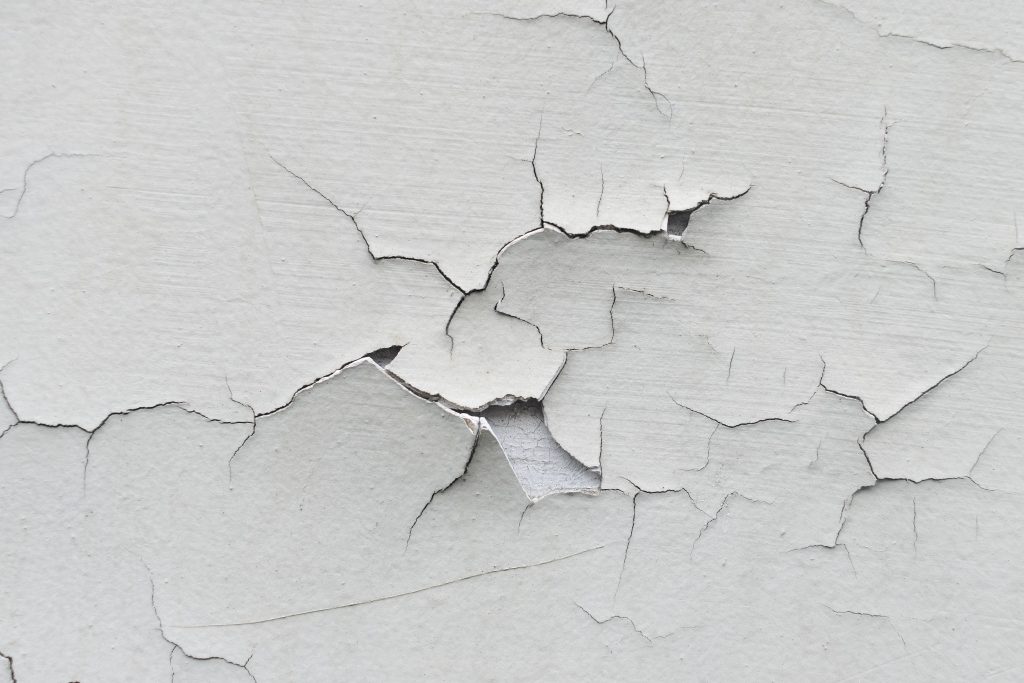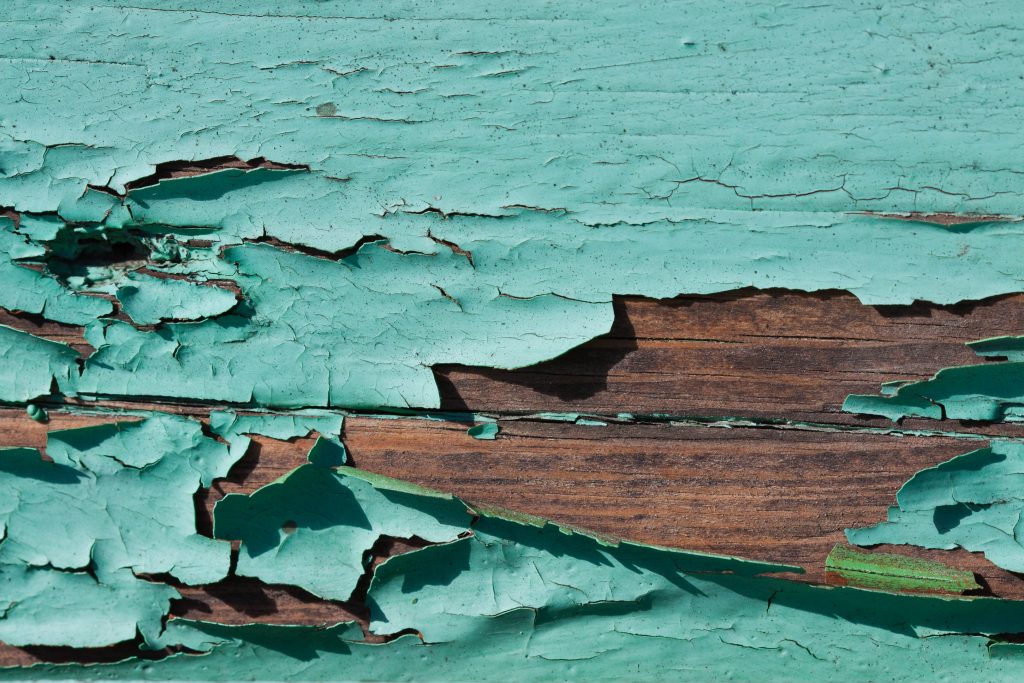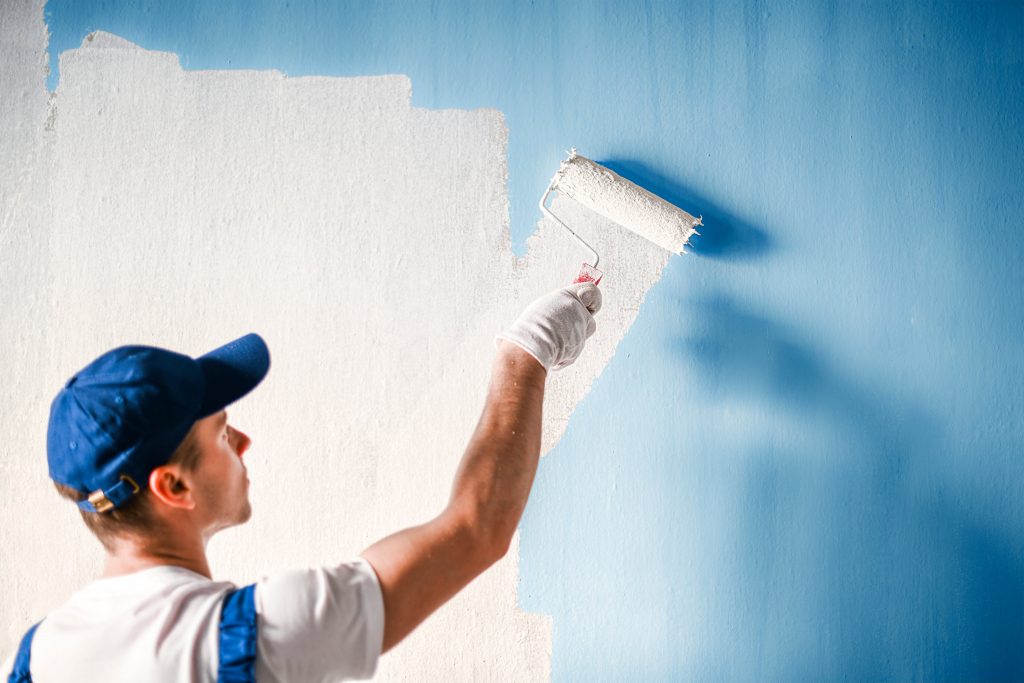
Do you have some cracks and flaking appeared on your walls throughout your home? Cracked paint can be an eyesore, and can degrade the look and feel of your home.
In short, yes you can paint over cracked paint, but it isn’t as simple as one may assume. Whilst, you can simply paint over it with a coat of fresh paint, that isn’t a guarantee the cracking won’t return. Even if the cracking doesn’t return, painting directly over cracked paint can leave unsightly texture, which may draw more attention to the area.
To repair cracked paintwork, it is always a good idea get the job done correctly, and for this, we’re going to take you through some steps. But first, onto how and why it happens.
Why does paint crack and flake?
Here’s how and why paint can crack and flake over time:
- Most of the time, it comes down to poor-quality paint. Lower-quality paint doesn’t adhere very well to surfaces, meaning that any objects that rub against the paint can flake it easily.
- Moisture can build up beneath paint close to a window, or on the corner wall of a building, if it’s constantly wet and cold outside. This moisture build-up can seep beneath the coats of paint and cause them to bubble and flake off. Typically, though this shouldn’t be an issue if the painter doing the job is using high-quality paint as well as preparing the surface correctly.
- Age of the paint job. Over time old paint can become brittle and crack due to sun damage and general wear and tear. This is a sign that the paintwork needs to be redone completely. This is great opportunity to change up the look of the area with a fresh colour!
As mentioned, most of the time paint cracks or flakes due to a poor quality job using poor quality paint. Even with good quality paint, if the wall surface isn’t prepared properly and the painter is inexperienced, the paint job won’t last in the long run.
How to paint over cracked or flaked paint? (standard walls)
So, can you paint over cracked paint? Yes, but it needs to be tackled the right way. Now that you have a bit of an understanding of why paint can crack, it’s time to get to work.
For that, we have compiled a guide to ensure your paint repair job is going to last as long as possible.
To begin with, you’re going to need some items and tools:
- Safety glasses, mask, gloves and a set of old clothes (painting can get messy!)
- Electric sander with fine-grit sandpaper (sandpaper is fine, but takes longer, and doesn’t yield as good results)
- A clean rag
- Roller and paintbrush and paint tray
- Primer paint
- High quality paint of your choice
Method:
- First off, you’re going to want to throw on your old clothes, and put on some gloves to protect your hands, safety glasses and a mask.
- Run the sander along the damaged area in gentle circles until you get a smooth surface. A mask is crucial for this step to prevent you from you breathing in dust.
- Use the clean rag to wipe away the dust. The surface area that’s going to be painted must be clean and smooth. Any dust particles left behind can lead to later cracking, thus returning you right back to where you started. So take your take to ensure all dust particles have been wiped away!
- Apply a single coat of the primer and allow it to dry. If you’re using a brush, keep your strokes even and running in the same direction. There should be manufacturer’s instructions on the can in regards to primer drying time, which is usually around 24 hours.
- The next day you can apply the paint of your choice. Same as before, if you’re using a brush keep the strokes even and all running in the same direction. It should take around 24 hours to dry, but it’s best to give the paint as much time as possible to dry, set and adhere.
How to paint over cracked or flaked paint? (wood)
Cracking paint doesn’t just appear on your interior walls, it’s also a common problem for wooden surfaces. Common places are window sills, frames, and even fences. The reason is much the same as with any surface, it could have been painted poorly initially, but wood also has a tendency to expand and crack, so there are some extra steps involved if that is the case.
To repair the paint, you’re going to need some things:
- Safety glasses, mask, gloves and a set of old clothes
- Paint scraper
- Putty knife
- Wire brush
- Clean rag
- Electric sander with fine-grit sandpaper (or sandpaper)
- Paintbrush
- Wood filler
- Primer paint
- High quality paint of your choice
Method:
- Much like with our previous guide for standard surfaces, make sure to put on your old clothes and safety gear before commencing.
- With the paint scraper, scrape away the loose and chipped paint. For safety reasons push away from yourself, and use two hands. Stop scraping when the paint doesn’t come off easily.
- Now use that wire brush to brush away loose paint. You may have to alternate this step with scraping to get all the paint residue off.
- If your wood surface has damage you’re going to need to use putty to fill it in. Starting small put a small amount of putty onto the putty knife and spread a thin layer of putty across the surface. Keep scraping and spreading the putty until it fills any holes and cracks and leaves a level finish.
- Time for a lunch break! Throw off your gloves, and give the putty about 2 hours to dry.
- Once the putty has dried you’ll need to sand it down with fine-grit paper. Run it in small circles until you leave a smooth finish.
- With a clean rag wipe the dust away. This ensures no dust particles are left behind to cause further peeling in the future.
- Apply a single coat of the primer and allow it to dry. If you’re using a brush keep your strokes even and running in the same direction. Allow 24 hours drying time.
- The next day you can finally apply the paint of your choice. Same as before, if you’re using a brush keep the strokes even and all running in the same direction. Allow 24 hours drying time.
How to prevent future cracking and flaking?
To prevent cracking and flaking, it comes down to how it was applied and how you look after your paint. Once the job has been done, it’s up to you to continue looking after it. Watch for moisture build-up in your home, and make sure to rectify any repairs or fixes required as soon as possible. Another thing to keep in mind is to keep painted surfaces clean, wiping away moisture and dust build up.
Hire a professional
As you have probably come to realise whilst reading this article, repairing cracked paint can be quite a lengthy and time-consuming process. The best tip we can really give to ensure the best paintwork repair is to hire a professional.
That’s where the team at Elite Painting come in. We’re a proudly Australian-owned and operated company, that specialises in full service residential and commercial painting across Mandurah and the Perth metro area. Not only can we repair your cracked paintwork, we also offer strata painting and anti-graffiti coating services.
When you choose us, we’ll guarantee that your paint will be future-proof from any damage, as well as keeping your home looking great for many years to come. Contact us to book our painting services today!



